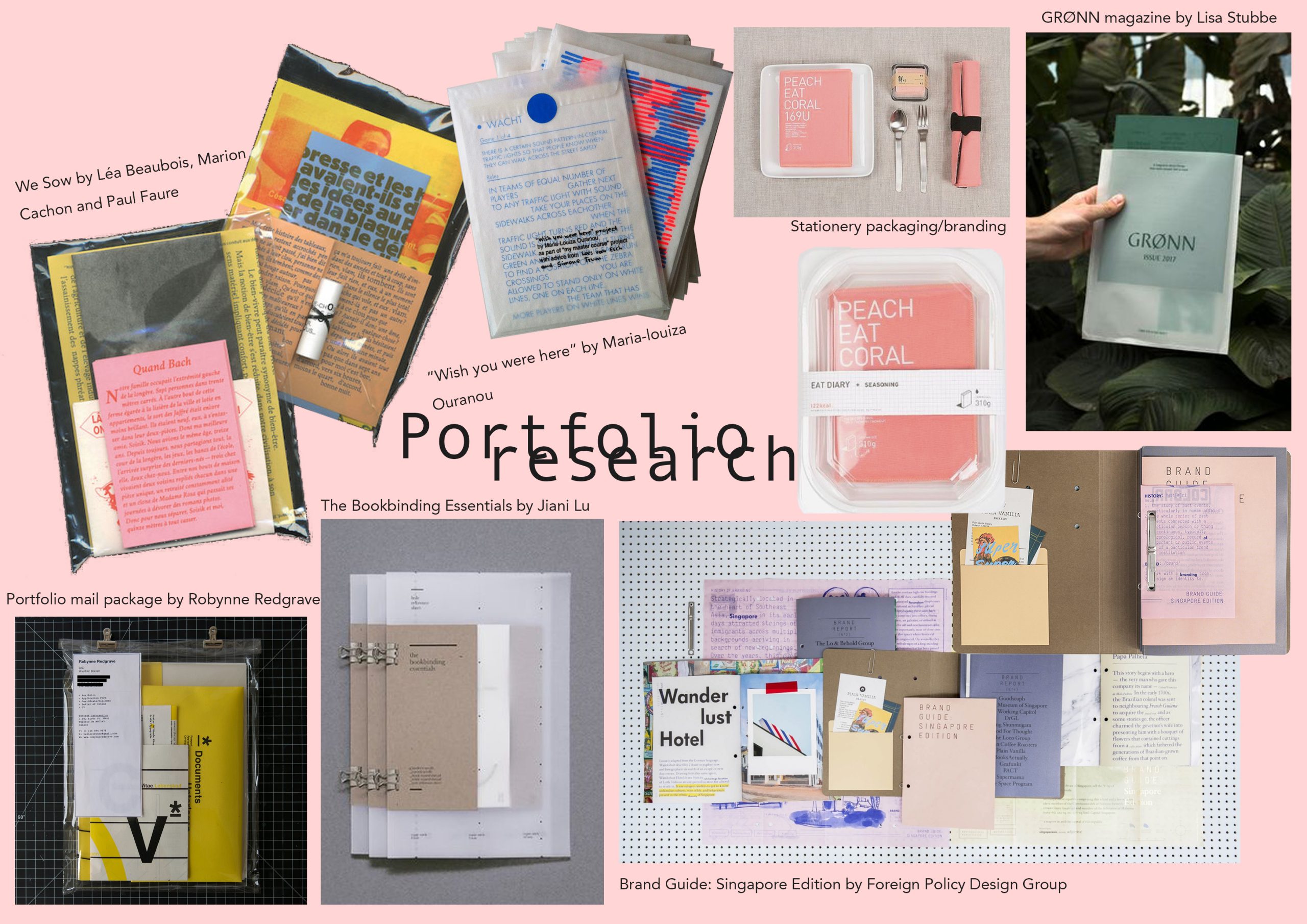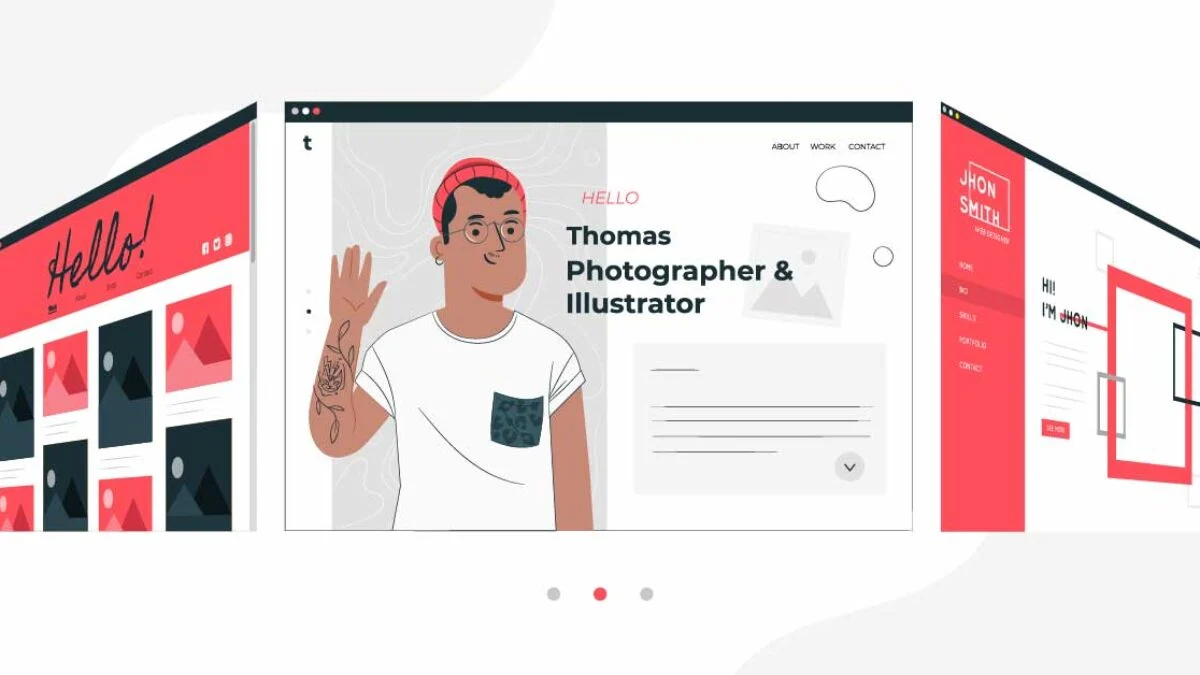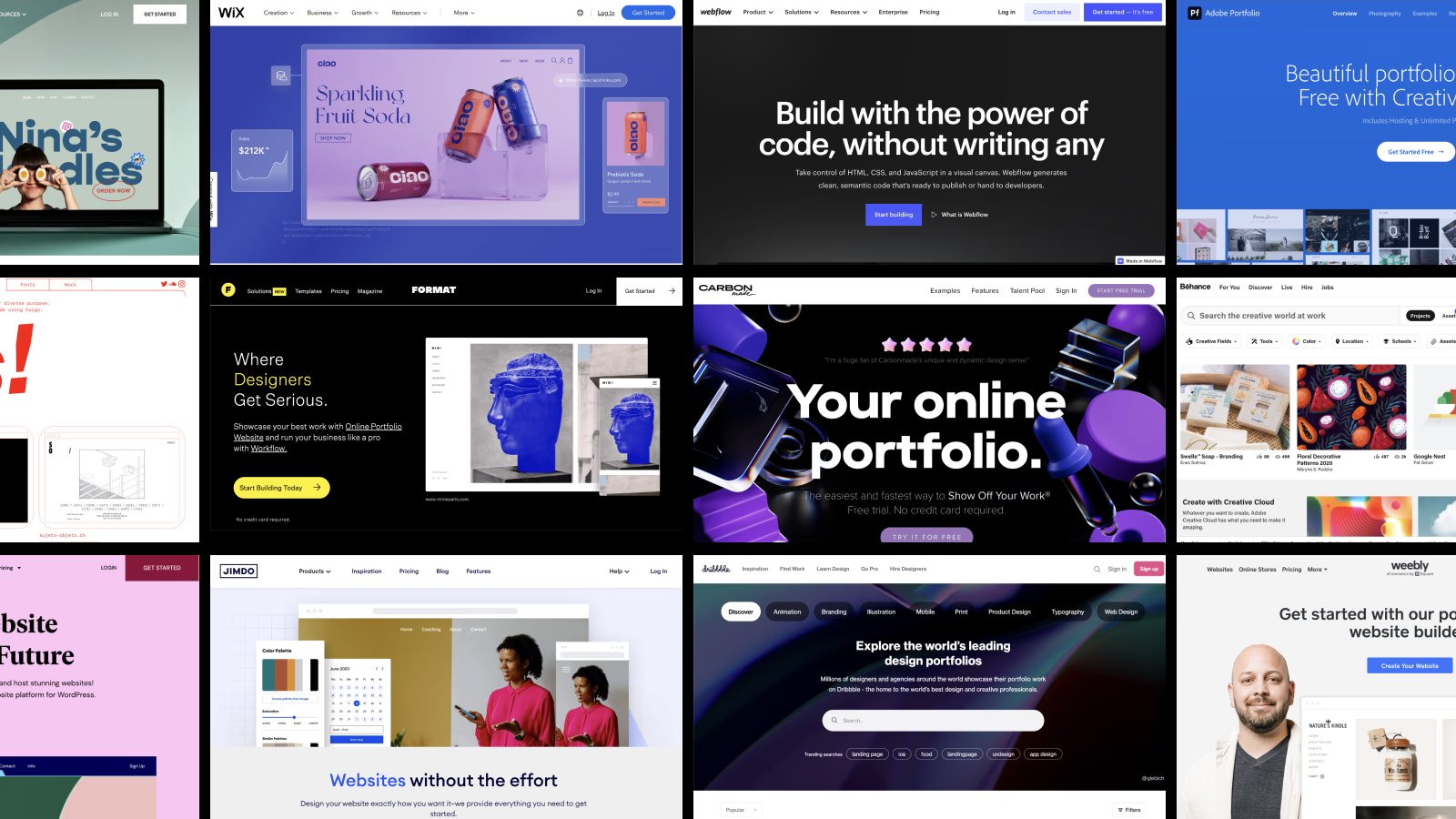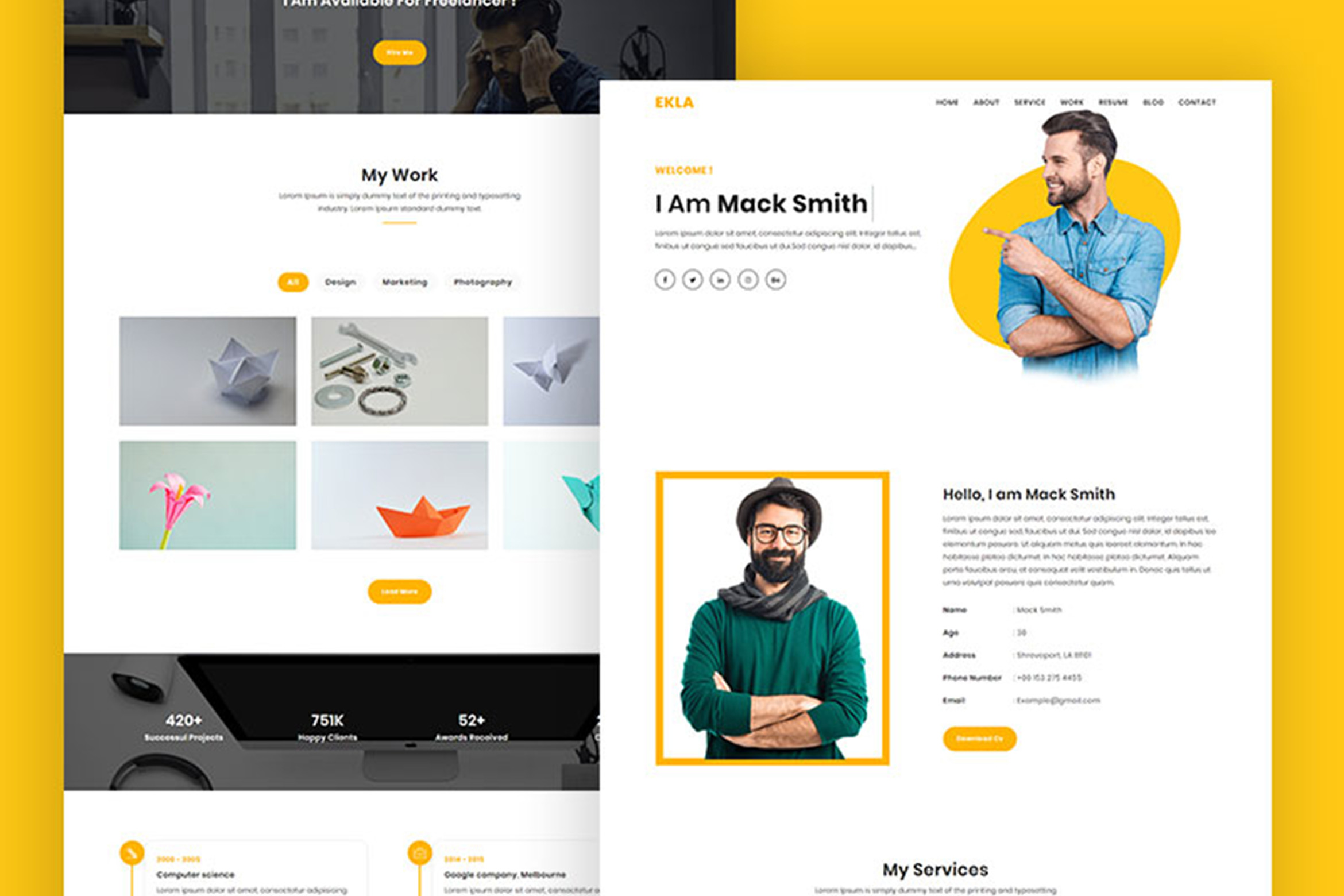In today’s digital age, a strong personal portfolio is no longer a “nice-to-have” – it’s a fundamental tool for career advancement. With the ever-evolving job market placing a premium on online presence and demonstrable skills, your portfolio acts as your digital storefront, showcasing your talents and experience to potential employers or clients. But in a sea of online portfolios, how do you make yours stand out in 2024?
The key lies in crafting a portfolio that is not just visually appealing, but strategically designed to resonate with your target audience and effectively communicate your unique value proposition. Here’s a roadmap to guide you in creating a personal portfolio that gets you noticed.


 The most effective personal portfolio format depends on your field, budget, and technical expertise. However, regardless of the format you choose, remember that clarity, conciseness, and a user-friendly experience are paramount. Your portfolio should be a well-organized and visually appealing representation of your professional story, effectively communicating your unique value and propelling you towards your career goals.
The most effective personal portfolio format depends on your field, budget, and technical expertise. However, regardless of the format you choose, remember that clarity, conciseness, and a user-friendly experience are paramount. Your portfolio should be a well-organized and visually appealing representation of your professional story, effectively communicating your unique value and propelling you towards your career goals.
What Is a Personal Portfolio?
A personal portfolio is your professional spotlight, a curated collection of materials designed to illuminate your skills, experience, and accomplishments to potential employers, clients, or collaborators. It’s more than just a digital resume; it’s a dynamic platform that allows you to creatively showcase your value proposition and make a lasting impression. The content of your portfolio will naturally vary depending on your field, but some core elements consistently shine through:Project Showcase:
This is the centerpiece of your portfolio, the stage where your best work takes center spotlight. Here, you’ll meticulously curate a selection of projects that exemplify your skills and expertise. For a graphic designer, this might include stunning visuals, creative layouts, and impactful branding elements. A web developer might showcase their work through interactive code snippets, user-friendly interfaces, and live website demos. The key is to choose projects that directly align with your target audience and career aspirations, providing concrete evidence of your capabilities.About You:
Introduce yourself and weave a captivating narrative! This section is your chance to share your professional story, highlighting your background, qualifications, and the passions that fuel your work. Briefly explain what makes you tick, what sets you apart, and the unique value you bring to the table.Skills & Expertise:
Don’t be shy – confidently articulate your skillset! This section is your chance to clearly outline your capabilities using relevant keywords that potential employers or clients are likely to search for. Be specific! Instead of simply listing “graphic design,” delve deeper and showcase your proficiency in areas like typography, logo creation, or user interface (UI) design.Contact Information:
Make it easy for opportunity to find you! Include your contact details such as your email address and a professional phone number (optional). You can also incorporate links to your relevant social media profiles on platforms like LinkedIn or industry-specific networking sites. This allows potential employers or clients to easily connect with you and initiate conversations.Types Of Personal Portfolios You Must Know
Personal portfolios come in a variety of formats, each offering unique advantages:Physical Portfolios:
A traditional mainstay in creative fields like photography or fashion design, physical portfolios are tangible collections of your work, often presented in a high-quality binder or presentation box. They allow for a tactile experience and the chance to curate a visually cohesive presentation. However, physical portfolios can be bulky and impractical to carry around, limiting their reach.
Website Portfolios:
An increasingly popular choice, website portfolios provide a dynamic and interactive platform to showcase your work. They offer complete creative control over the design and layout, allowing you to craft a visually stunning and engaging experience for visitors. Website portfolios can also easily integrate multimedia elements like videos or animations, further enriching the presentation of your skills.
Online Platform Portfolios:
Several online platforms cater specifically to creating and hosting portfolios. These platforms offer user-friendly tools and pre-built templates to get you started quickly, even if you have limited web design experience. While convenient and often free to use, some online platforms may limit your creative control or restrict customization options. The most effective personal portfolio format depends on your field, budget, and technical expertise. However, regardless of the format you choose, remember that clarity, conciseness, and a user-friendly experience are paramount. Your portfolio should be a well-organized and visually appealing representation of your professional story, effectively communicating your unique value and propelling you towards your career goals.
The most effective personal portfolio format depends on your field, budget, and technical expertise. However, regardless of the format you choose, remember that clarity, conciseness, and a user-friendly experience are paramount. Your portfolio should be a well-organized and visually appealing representation of your professional story, effectively communicating your unique value and propelling you towards your career goals.
A Step-By-Step To Create A Personal Portfolio
In today’s digital landscape, a personal portfolio is no longer a luxury – it’s a necessity. It acts as your professional online presence, showcasing your skills and experience to potential employers or clients. But with so much information swirling around, how do you translate your talents into a captivating portfolio that gets you noticed? Fear not, this step-by-step guide will equip you with the knowledge to craft a personal portfolio that shines:1. Define Your Purpose and Audience
- Know Your Why: What is the primary goal of your portfolio? Are you seeking a full-time job, freelance opportunities, or attracting new clients? Understanding your purpose helps tailor the content and design to resonate with your target audience.
- Identify Your Audience: Who are you trying to impress? Tailor your portfolio to their needs and expectations. For instance, a portfolio for a marketing agency will differ from one targeting tech startups. Research relevant companies or job descriptions to understand the skills and experience they seek.
2. Gather Your Best Work
- Quality Over Quantity: Don’t overwhelm viewers with an avalanche of projects. Select your strongest work that aligns with your target audience and career aspirations.
- Visual Appeal Matters: Use high-quality visuals that showcase your skills effectively. For graphic designers, this might be stunning web mockups or eye-catching logos. Writers can include compelling writing samples or captivating blog posts they’ve authored.
- Quantify Your Impact (Optional): Where applicable, use data to demonstrate the impact of your work. Increased website traffic, improved conversion rates, or positive client testimonials add weight to your skills and expertise.
3. Choose Your Platform
- Physical Portfolios: While a classic option in creative fields like photography or fashion design, physical portfolios can be bulky and impractical. Consider their limitations before choosing this format.
- Website Portfolios: Gain complete creative control by building your own website portfolio. This offers maximum flexibility in design and allows you to seamlessly integrate multimedia elements like videos or animations. However, website creation requires some technical know-how.
- Online Platform Portfolios: Several online platforms like Behance or Dribble offer user-friendly tools and pre-built templates to create a portfolio quickly, even with limited web design experience. Convenience comes at a cost – some platforms might restrict customization options.
4. Craft Compelling Content
- About You: Introduce yourself and tell your professional story! Highlight your background, qualifications, and the passions that fuel your work. Briefly explain what makes you unique and the value you bring to the table.
- Project Showcase: This is the heart of your portfolio. Present your chosen projects with clear descriptions, highlighting the challenges addressed, solutions implemented, and the achieved results. Focus on showcasing your specific skills and thought process.
- Skills & Expertise: Don’t be shy! Clearly articulate your skillset using relevant keywords potential employers or clients might search for. Go beyond generic terms – specify your proficiency in specific areas related to your field.
- Contact Information: Make it easy for opportunity to find you! Include your email address, a professional phone number (optional), and links to relevant social media profiles where you showcase your work or industry expertise.
5. Design for User Experience (UX)
- First Impressions Matter: Prioritize a clean and user-friendly design that creates a positive first impression. Ensure intuitive navigation, a clear hierarchy of information, and a mobile-responsive layout that looks great on any device.
- Visually Appealing Design: A visually engaging portfolio grabs attention and showcases your design sensibilities. Use high-quality visuals, a clean layout, and a color scheme that aligns with your brand or industry standards.
6. Optimize and Launch
- SEO Optimization: Incorporate relevant keywords throughout your portfolio content to improve search engine ranking and ensure potential employers or clients can easily find you online.
- Website Analytics: If you have a website portfolio, track user behavior using analytics tools. This data can help you identify areas for improvement and optimize your portfolio for better engagement.
- Launch and Promote: Once finalized, launch your portfolio and share it! Promote it on social media platforms, professional networking sites like LinkedIn, or include it in your email signature.






